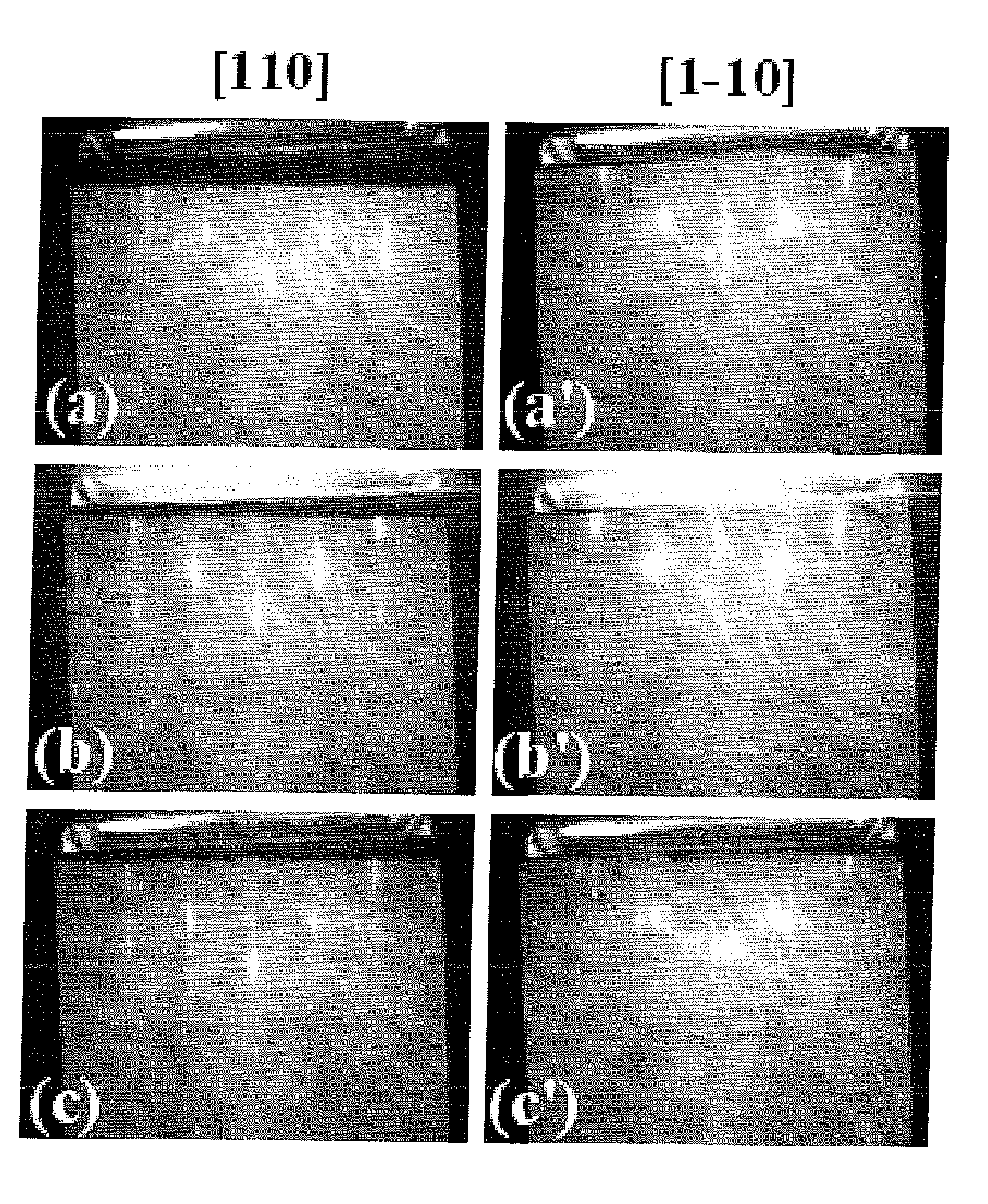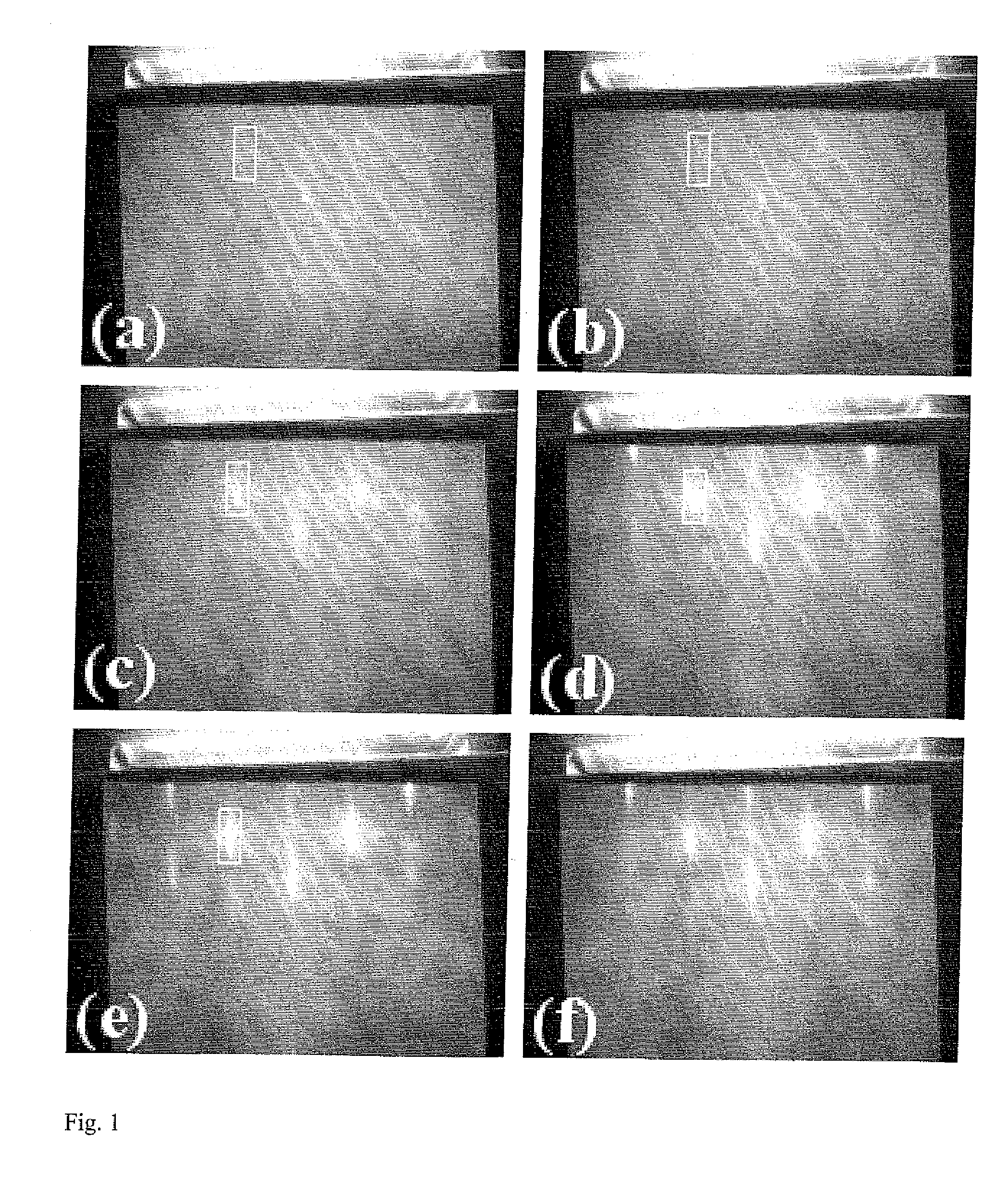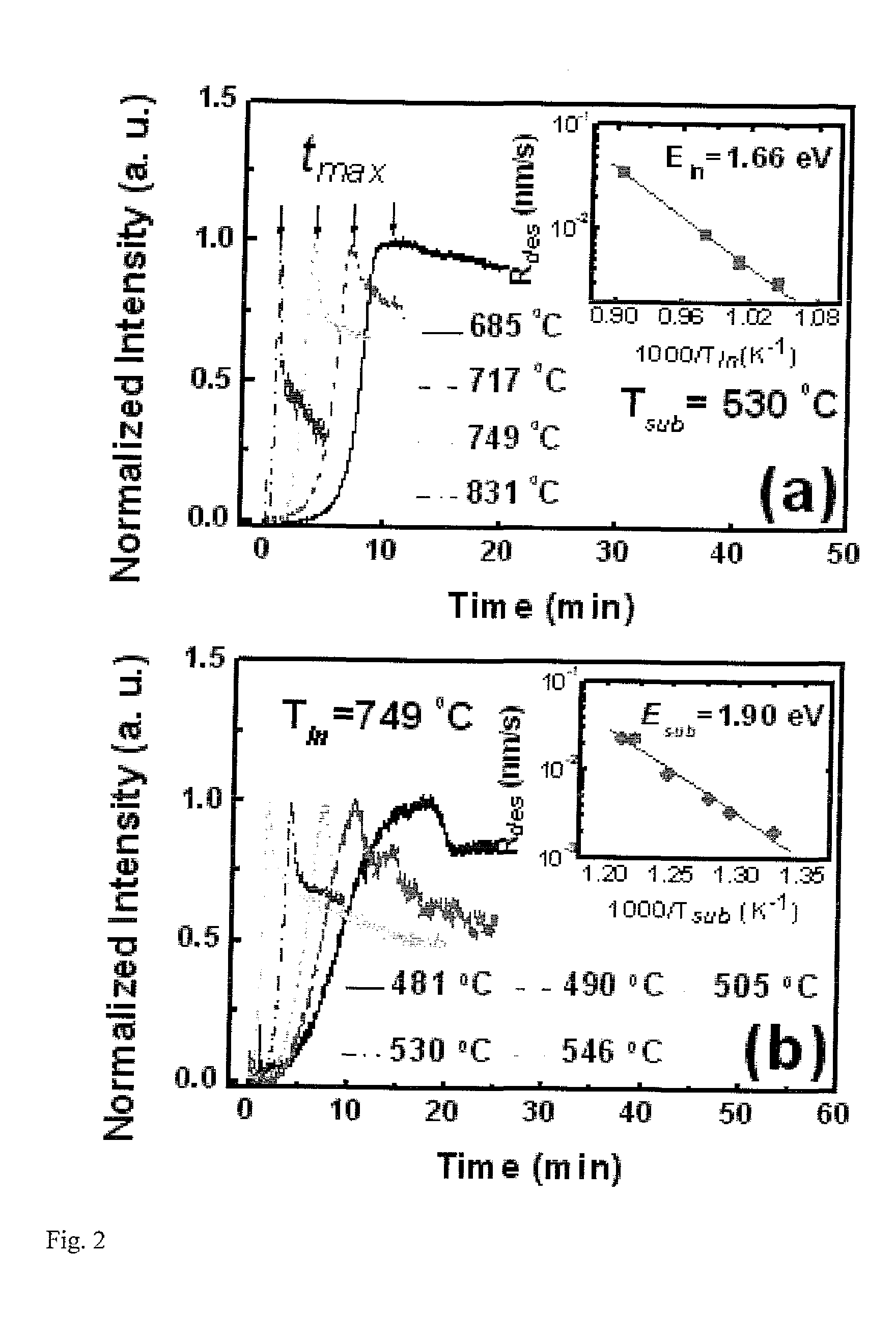Oxide removal from semiconductor surfaces
a technology of semiconductor surfaces and oxides, applied in semiconductor lasers, semiconductor devices, lasers, etc., can solve the problems of oxidation without detrimental effect, pitting surface, limited effectiveness,
- Summary
- Abstract
- Description
- Claims
- Application Information
AI Technical Summary
Benefits of technology
Problems solved by technology
Method used
Image
Examples
Embodiment Construction
[0081]Certain embodiments provide Indium-assisted desorption of native GaAs surface oxides. In the following description, indium-assisted desorption of native GaAs surface oxides at substrate temperatures of 480-550° C. is described. The oxides are removed through production of volatile gallium and indium suboxides, Ga2O and In2O. Compared to a gallium-assisted desorption process, excess indium is easily removed at low temperature, leading to a clean, smooth surface. The feasibility of using indium-assisted desorption for the regrowth of high quality quantum dot structures is shown.
[0082]To overcome problems associated with prior art techniques, indium is used in certain embodiments of the invention as an alternative element which can react with Ga2O3 to produce volatile products, and which can also itself be readily evaporated at lower temperature from the underlying GaAs substrate. Compared with gallium, indium has a relatively large atomic size as well as a high vapour pressure. ...
PUM
| Property | Measurement | Unit |
|---|---|---|
| thickness | aaaaa | aaaaa |
| temperature | aaaaa | aaaaa |
| temperature | aaaaa | aaaaa |
Abstract
Description
Claims
Application Information
 Login to View More
Login to View More - R&D
- Intellectual Property
- Life Sciences
- Materials
- Tech Scout
- Unparalleled Data Quality
- Higher Quality Content
- 60% Fewer Hallucinations
Browse by: Latest US Patents, China's latest patents, Technical Efficacy Thesaurus, Application Domain, Technology Topic, Popular Technical Reports.
© 2025 PatSnap. All rights reserved.Legal|Privacy policy|Modern Slavery Act Transparency Statement|Sitemap|About US| Contact US: help@patsnap.com



